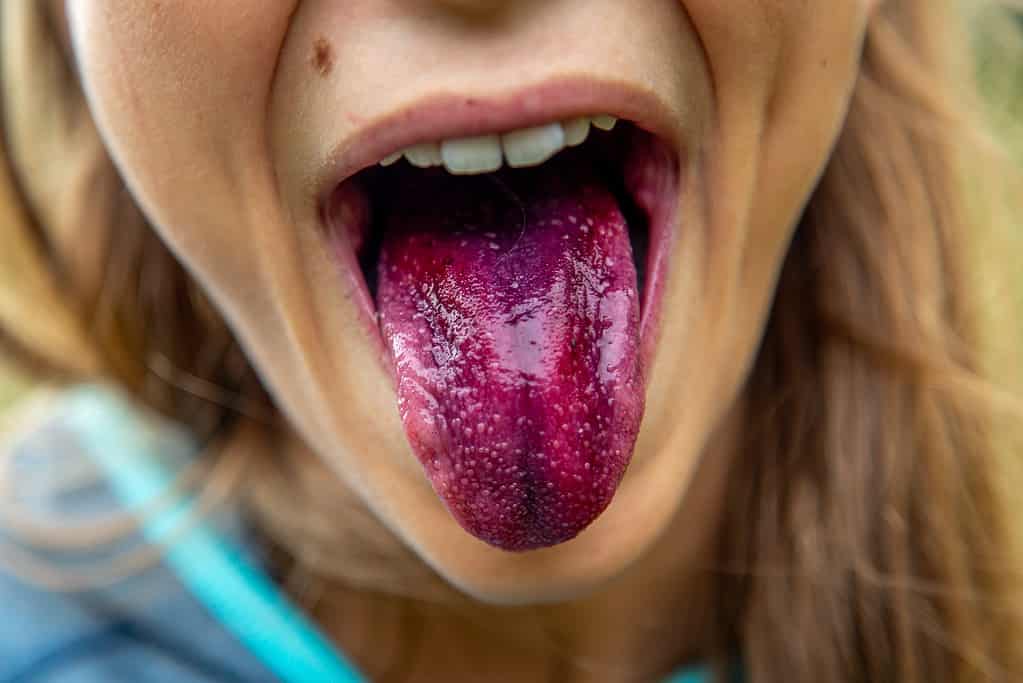We all have our very own unique sense of taste, and according to a new study, that could be because we all have our own unique tongue. According to a new study that featured AI and thousands of 3D tongue scans, our tongues have a unique topography — and no two are alike.

Tongue topography
The human tongue has always been a subject of fascination. Beyond its known gustatory functions, it serves a number of different functions, helping us speak and articulate, and even providing pleasure when we eat something good. But there’s still a lot about the tongue we don’t know, particularly when it comes to the distribution of papillae — those tiny projections on the tongue’s surface.
The new research started with over 2,000 3D scans of the tongue papillae — scans that were taken from silicone molds of fifteen people’s tongues. Researchers from the University of Edinburgh and the University of Leeds, both in the UK, then trained AI computer models to learn from these three-dimensional microscopic scans of the human tongue, showing the unique features of papillae.
They found that not only are these tiny structures distinctive across individuals but can also predict biological variables like age and gender with moderate accuracy. The uniqueness of these features has even led to the possibility of using tongue papillae as a unique identifier, a concept previously unexplored. In other words, our tongues could be as unique as our fingerprints.
The researchers developed a framework that evaluates the papillae’s type, arrangement, and individual uniqueness. By applying interpretive machine learning techniques, they achieved an 85% accuracy in identifying papillae types. Gender and age could be predicted with moderate accuracy, and remarkably, individual identification was possible with an accuracy of 48% among 15 participants from a single papilla.
The research highlights the importance of filiform and fungiform papillae, each with its unique role. Fungiform papillae, home to taste buds, have been linked to taste perception and sensitivity. In contrast, filiform papillae, devoid of taste buds, play a key role in textural perception. Women — who are more likely to be categorized as ‘supertasters’ — tend to have more fungiform papillae. The study dives into the intricate geometry of these papillae, utilizing computational topology and machine learning to decode their patterns and shapes.
This research opens new avenues in various fields, ranging from food engineering to oral diagnostics. The intricate pattern of tongue papillae could offer insights into personal food preferences, revealing a new layer of understanding in how we perceive and interact with what we eat. Furthermore, the potential of using tongue prints as unique identifiers invites further exploration in biometrics.
A delicious surprise
Researchers weren’t exactly expecting this analysis to work so well. They now want to expand the scope of this research and include more participants, and focus on other features on the human body as well.
“It was remarkable that the features based on topology worked so well for most types of analysis, and they were the most distinctive across individuals. This needs further study not only for the papillae, but also for other kinds of biological surfaces and medical conditions,” says lead author, Rayna Andreeva from the University of Edinburgh.
In addition, researchers say this could help in designing customized food for people based on their tongue structure and help to diagnose abnormal growths earlier on.
“We were surprised to see how unique these micron-sized features are to each individual. Imagine being able to design personalized food customized to the conditions of specific people and vulnerable populations and thus ensure they can get proper nutrition whilst enjoying their food,” says senior author, Professor Rik Sakar, Reader, School of Informatics, University of Edinburgh.
“We are now planning to use this technique combining AI with geometry and topology to identify micron-sized features in other biological surfaces. This can help in early detection and diagnosis of unusual growths in human tissues,” the researcher concludes.
The study was published in Scientific Reports.









